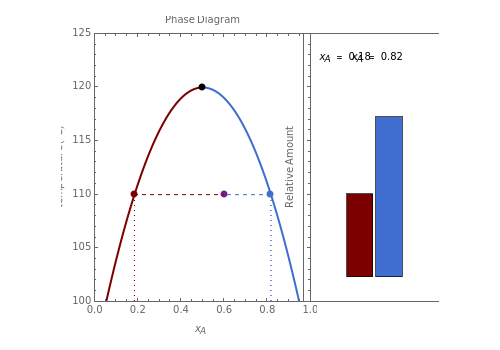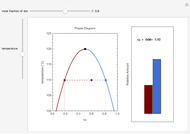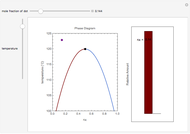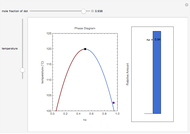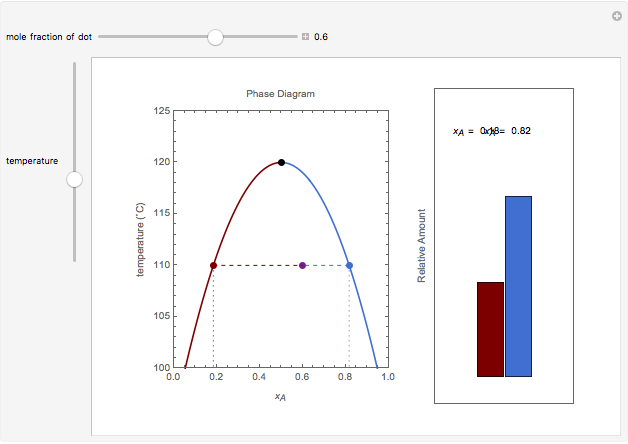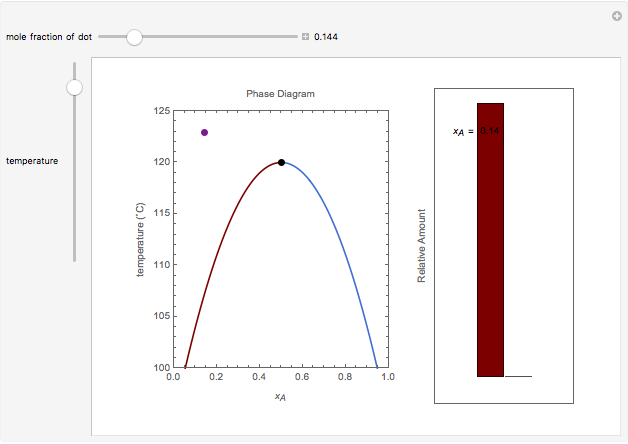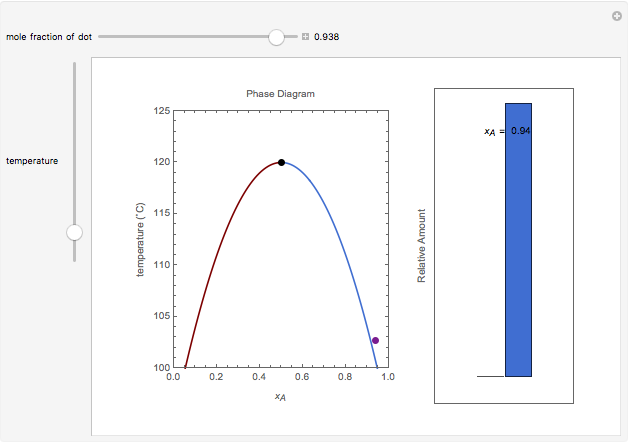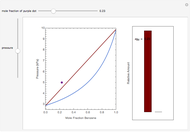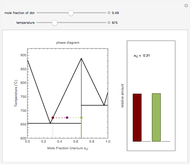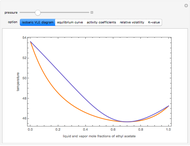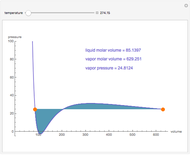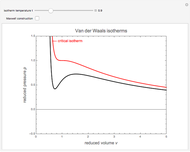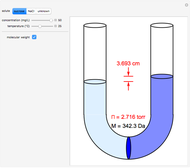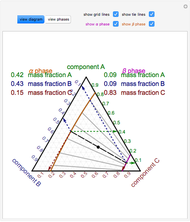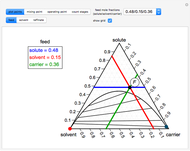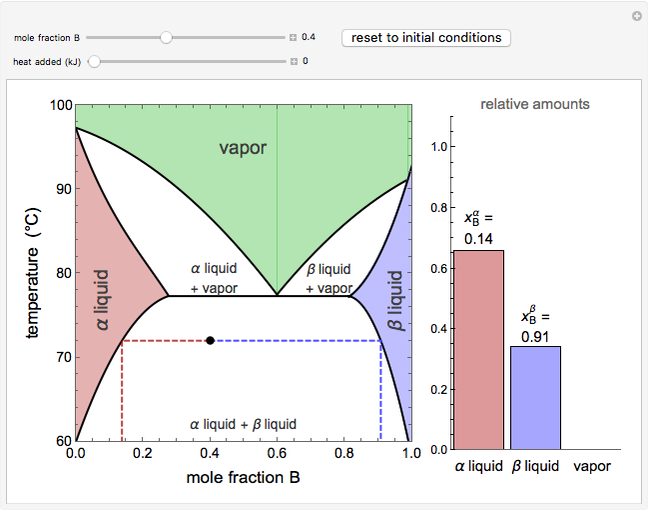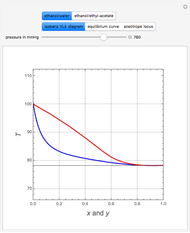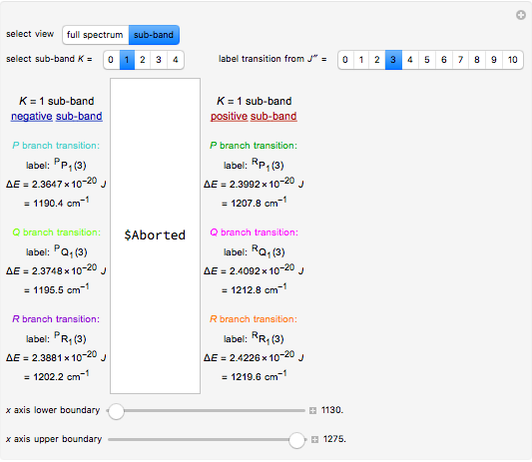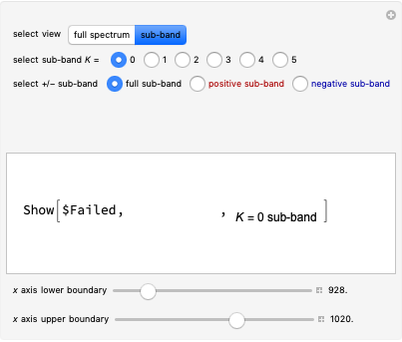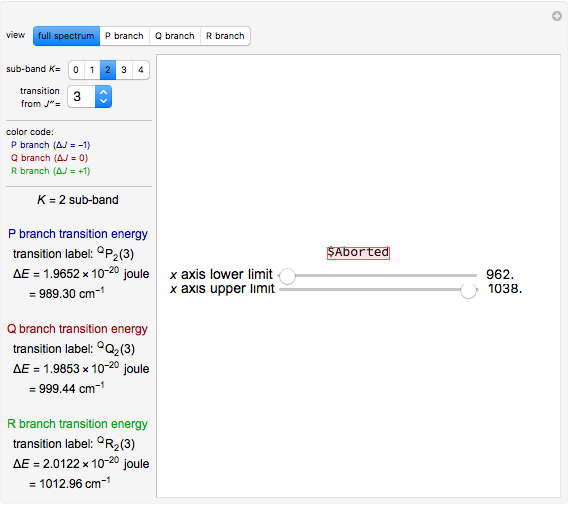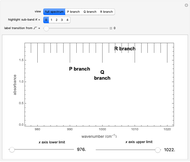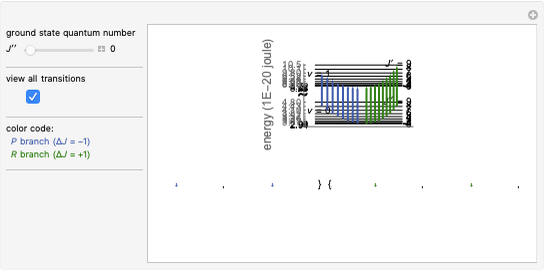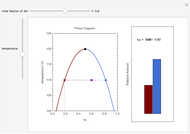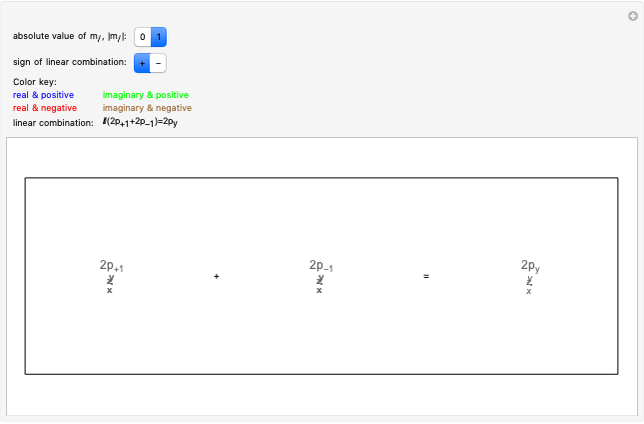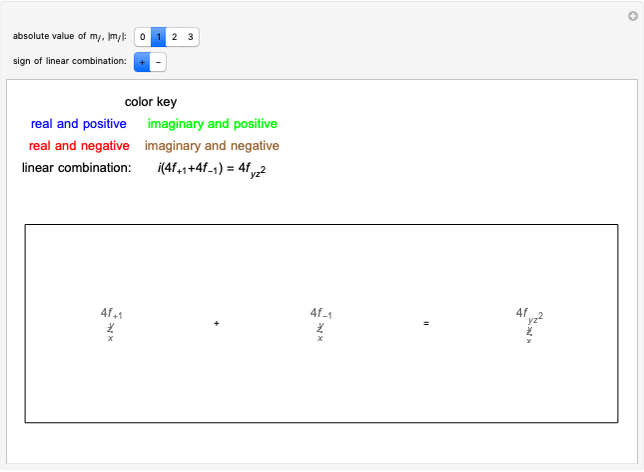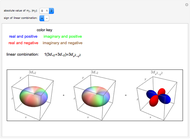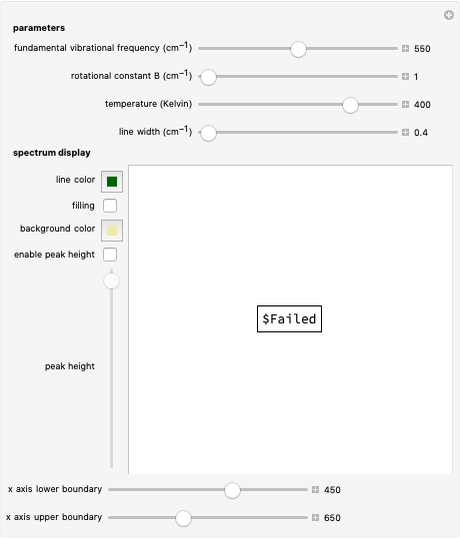Lever Rule Applied to Phase Diagram for Partially Miscible Liquids

Requires a Wolfram Notebook System
Interact on desktop, mobile and cloud with the free Wolfram Player or other Wolfram Language products.
The miscibility of a pair of liquids refers to the degree to which they mix spontaneously. A pair of partially miscible liquids mixes under some conditions but not at others. The phase diagram for a pair of partially miscible liquids  and
and  illustrates their behavior as a function of temperature and overall composition. For conditions corresponding to a point inside the curve, two phases are present (i.e., two layers are observed in the container). One phase is mostly substance
illustrates their behavior as a function of temperature and overall composition. For conditions corresponding to a point inside the curve, two phases are present (i.e., two layers are observed in the container). One phase is mostly substance  with some
with some  dissolved in it. The other phase is mostly substance
dissolved in it. The other phase is mostly substance  with some
with some  dissolved in it. Inside the two phase regions, the compositions of the two phases are determined by drawing horizontal lines (here shown dashed) to the red line (for the composition of the "
dissolved in it. Inside the two phase regions, the compositions of the two phases are determined by drawing horizontal lines (here shown dashed) to the red line (for the composition of the " -rich" phase) and the blue line (for the "
-rich" phase) and the blue line (for the " -rich" phase). These are called "tie lines" or "levers". The lever rule is used to calculate the relative amounts of the two phases, which are represented on the bar graph on the right. The compositions of the two phases are indicated by dotted lines on the phase diagram and numerically at the top of the bar graph. Outside the curve,
-rich" phase). These are called "tie lines" or "levers". The lever rule is used to calculate the relative amounts of the two phases, which are represented on the bar graph on the right. The compositions of the two phases are indicated by dotted lines on the phase diagram and numerically at the top of the bar graph. Outside the curve,  and
and  mix spontaneously to form one layer. The highest temperature at which two phases form is called the upper consolute temperature and is indicated by a black dot on the phase diagram.
mix spontaneously to form one layer. The highest temperature at which two phases form is called the upper consolute temperature and is indicated by a black dot on the phase diagram.
Contributed by: Lisa M. Goss (March 2011)
Open content licensed under CC BY-NC-SA
Snapshots
Details
Composition is usually expressed as a mole fraction but sometimes other units such as mole percent or mass percent are used. The amounts of the phases are calculated from the lever rule:  . Here
. Here  and
and  are the number of moles in the two liquid phases, while
are the number of moles in the two liquid phases, while  and
and  are the lengths of the levers, as indicated by dashed lines on the phase diagrams. The "relative amount" on the bar chart is calculated from
are the lengths of the levers, as indicated by dashed lines on the phase diagrams. The "relative amount" on the bar chart is calculated from  and
and  .
.
Snapshot 1: when the overall composition ( ) is 0.6 and the temperature is 110 ˚C, there are two phases; one of the phases is mostly
) is 0.6 and the temperature is 110 ˚C, there are two phases; one of the phases is mostly 
 ) and the other phase is mostly
) and the other phase is mostly 
 ); there is twice as much of the phase with
); there is twice as much of the phase with  as there is of the phase with
as there is of the phase with  .
.
Snapshot 2: when the overall composition is  and the temperature is 115 ˚C, the substances are miscible and form a single phase
and the temperature is 115 ˚C, the substances are miscible and form a single phase
Snapshot 3: when the overall composition ( ) is 0.3 and the temperature is 105 ˚C, there are two phases; one of the phases is mostly
) is 0.3 and the temperature is 105 ˚C, there are two phases; one of the phases is mostly 
 ) and the other phase is mostly
) and the other phase is mostly 
 ). There is about three times as much of the phase with
). There is about three times as much of the phase with  as there is of the phase with
as there is of the phase with  .
.
Permanent Citation
